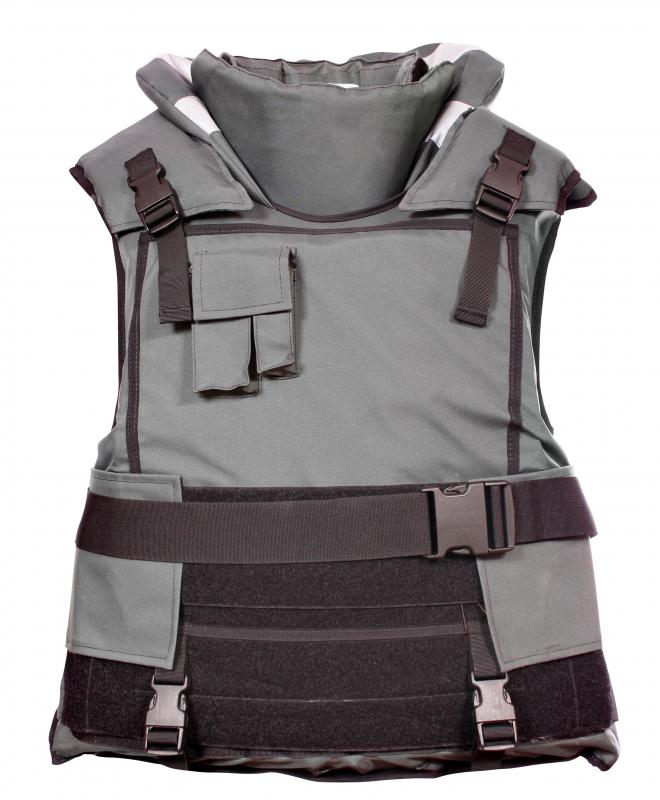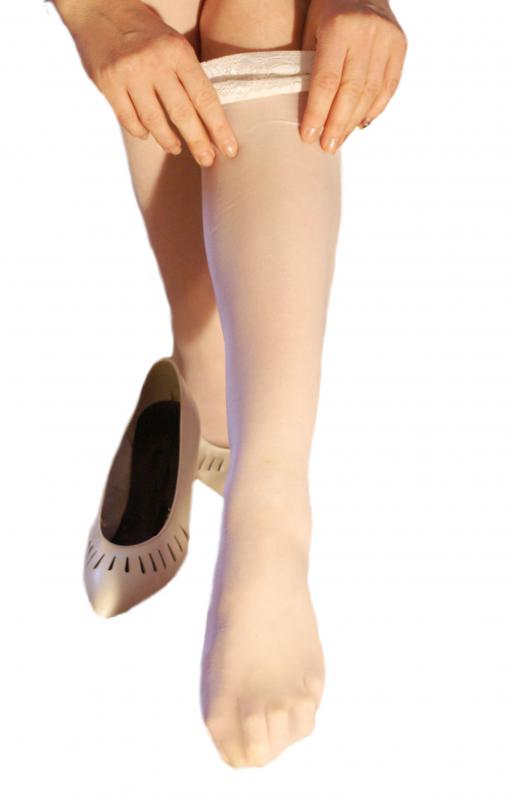At HomeQuestionsAnswered, we're committed to delivering accurate, trustworthy information. Our expert-authored content is rigorously fact-checked and sourced from credible authorities. Discover how we uphold the highest standards in providing you with reliable knowledge.
What is Nylon?
Nylon is a synthetic fabric made from petroleum products. It was developed in the 1930s as an alternative to silk, although it quickly became unavailable to civilian consumers, because it was used extensively during World War II. Like many synthetics, this material was developed by Wallace Carothers at the Dupont Chemical company, which continues to manufacture it today. Nylon is valued for its light weight, incredible tensile strength, durability, and resistance to damage. It also takes dye easily, making the fabric available in a wide array of colors for consumers.
Today, nylon is among the many polymer products in common daily use throughout the world. It is the second most used fiber in the United States, since it is so versatile and relatively easy to make. Like most petroleum products, it has a very slow decay rate, which unfortunately results in the accumulation of unwanted products in landfills around the world.

Nylon is made through a chemical process called ring opening polymerization, in which a molecule with a cyclic shape is opened and flattened. Other forms of the material are made through the chemical reaction between two monomers: adipoyl chloride and hexamethylene diamine. When stretched, the fibers even out, thin, and smooth until they reach a point at which they have no more give, yet are still very strong. After nylon is extruded in a thread form, therefore, it is drawn or stretched after it cools to make long, even fibers. Before drawing, the material has a tangled structure, which straightens out into parallel lines.

The strength of nylon comes from amide groups in its molecular chain, which bond together very well. It also has a very regular shape, which makes it well suited to creating fabrics designed to stand up to intense forces. In fact, it was the primary material used in parachutes and ropes during World War II for this reason. It is also used for bulletproof vests and other hard wearing items.

Nylon is very sensitive to heat and should be washed and dried on cool settings. The fabric can also be hung dry, and it is favored by campers because it dries very quickly. It's a flexible textile, and as a result, it appears in a wide range of applications, from clothing to climbing equipment. Depending on how it is processed, nylon can be formed into the gossamer-like threads used in stockings or into thick toothbrush bristles.
AS FEATURED ON:
AS FEATURED ON:















Discussion Comments
Could anyone please tell me the macro-structure for nylon to answer some of these questions?
It's waterproof because its a nonwater permeable polymer.
Chemical structure is COOH CH2 CH2 CH2 CH2 COOH.
Oil is a type of fossil fuel.
Nylon is needed for its lightweight and good strength to weight. It's cheap to make and very strong, and it can also be made into a cord.
What do you need to make this?
Nylon was demonstrated at the worlds fair In New York. It was a joint effort. A British guy brought virtually the same chemical compound to the fair as a guy from New York and they decided to join forces make it a better stronger product, hence the name nylon. It was a joint effort between an American and a British guy: ny is New York, and lon is London.
Hello, quick question. After making nylon from hexanediamine and sebacoyl cloride, will the nylon harden like plastic?
Nylon is an amazingly strong material and seems to last forever. Nylon shorts are brilliant for swimming in and for wearing as underwear.
i want to know about the properties of nylon, rayon, acrylic, polyester, cotton, silk and satin.
How much does it cost to make about a meter (spelled meter for other countries) of nylon rope?
I need nylon. i am making a nylon handbag so please tell me which material is suitable for a handbag?
with how much efficiency can nylon be used for ballistic vests?
Nylon is made from plastics -- a petroleum product.
Nylon is used widely in the military. The Navy uses it in rope to tie ships to the pier. It is used because of its strength and stretching properties. So do civilian ships, oil tankers and mountain climbers. Great for clothing!
It is my understanding that nylon is produced from coal and not petroleum. I have been acquainted with nylon and the production of nylon since its discovery in 1938 at the duPont laboratories near Wilmington, Delaware. Can you come up with a definitive answer to its source? Thanks!
where is nylon made?
what is nylon used for? what is made from it?
How did Nylon get its name?
why do we need nylon?
what are waste materials of nylon? How and where do we obtain it?
I have some technology homework but I can't find the answer anywhere. The answer to this needs to be concise. What are the uses of nylon?
Where does nylon come from? From fossil fuels or oil?
I think something is missing. Would you please tell the chemical formula of nylon? Thanks and have a good day.
how is nylon disposed of?
i wear tiny nylon running shorts and they repel water but when i bulge i start to chafe.
can we use nylon in electrical insulation?
How do you make this?
why is it waterproof?
could you describe the metallorgraphy of the nylon?
or maybe the nylon's microstructure?
could you please suggest some techniques for the safe disposal of nylon waste?
I've heard people in other languages call plastic bags - those plastic grocery bags - nylon. Are they partially composed of nylon? Not just plastic? Is that what makes them strong enough to hold heavy groceries?
Post your comments